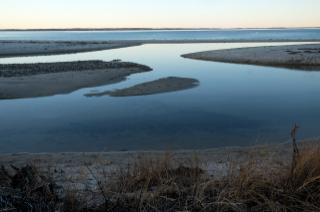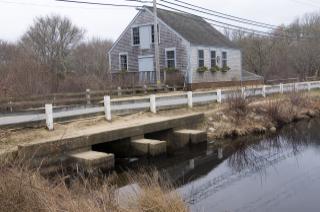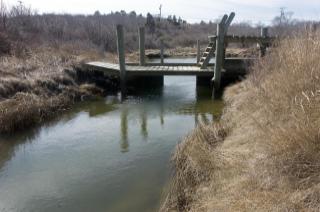With support from officials, a group of residents will get out their shovels and widen a channel between James Pond and Vineyard Sound.
Herring Runs
2016
Longstanding efforts to widen a historic herring run and improve circulation in James Pond are gaining momentum. The 50-acre pond is tucked along the north shore of West Tisbury.
2009
Herring have arrived in Vineyard waters, and this is particularly good news for a fish in trouble. Years ago local fishermen used to count the herring by the barrel; today they are counted only by the handful.
This is the fourth spring Massachusetts anglers have been prohibited from catching these fish. The state moratorium is a hardline effort to protect the fish from further decline. An initial three-year moratorium was renewed; it is to last another two years.
2008
Herring are harbingers of spring. The first of them usually appear in Island waters now. But there is serious concern about the health of the fishery across the region.
Although Massachusetts is in the third year of a moratorium on the harvesting of these small fish, the fishery has failed to rebound. Fishing prohibitions are also in place in Connecticut and Rhode Island.
Also known as alewives and river herring, these anadromous fish make a pilgrimage every spring into coastal estuaries, to spawn in the freshwater pond where they themselves were created.






